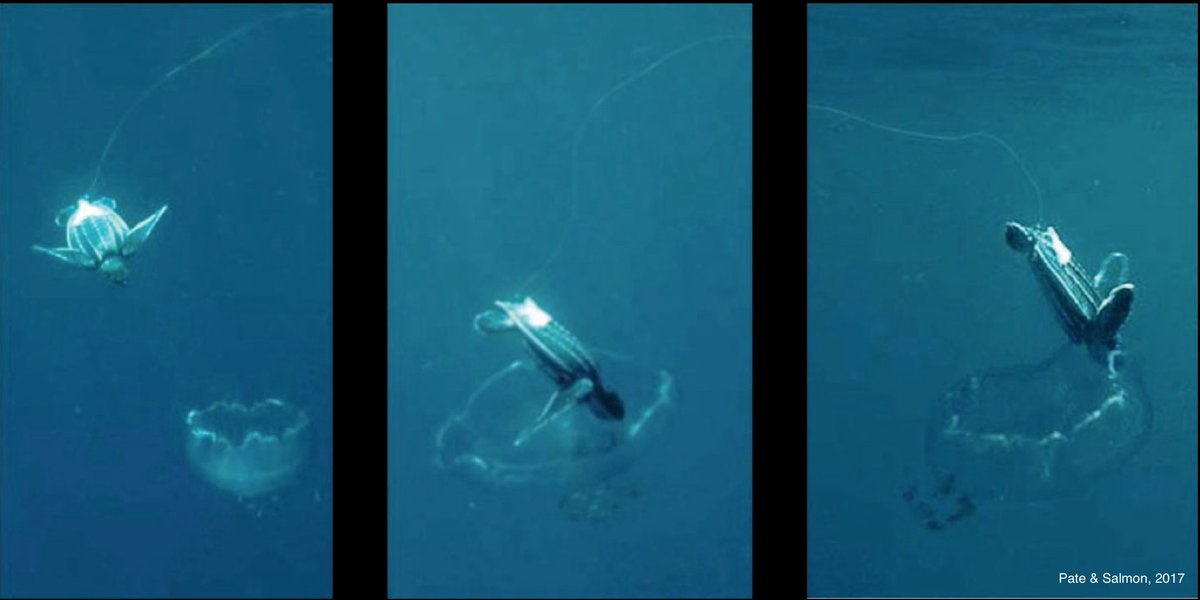1/7 Evidence for the independent evolution of visual perception during seafinding by hatchling leatherback sea turtles (Dermochelys coriacea) 🐢#SeaTurtleTalks #TurtleTuesday 

2/7 Hatchling sea turtles crawl toward the lowest and brightest horizon when they emerge from nests at night #seafinding. Differences in spectral sensitivities driven by different life histories could lead to the independent evolution of this innate behavior. #SeaTurtleTalks 

3/7 Leatherback sea turtles are the largest and most distantly related extant sea turtle species. They are uniquely deep-diving, pelagic across all life stages, and forage exclusively on gelatinous zooplankton making their visual environment quite distinct. #SeaTurtleTalks 





4/7 Y-maze studies revealed that leatherback and cheloniid hatchlings were both most sensitive to shorter wavelengths but differed in their overall sensitivity. At most tested wavelengths, leatherbacks were 10-100x less sensitive than their cheloniid relatives. #SeaTurtleTalks 

5/7 Leatherbacks also showed a unique increase in sensitivity near 480 nm. This peak sensitivity corresponds with wavelengths around 475 nm that penetrate deepest in clear ocean water (ideal for #deepdivers but unnecessary for shallow water inhabiting cheloniids). #SeaTurtleTalks 

6/7 Perceptual sensitivity thresholds were below the light levels available on the beach at night, but leatherback hatchlings took longer to reach the water and exhibited circling behavior more often under new moon conditions. A difference not seen in cheloniids. #SeaTurtleTalks 



7/7 Together this suggests the evolution of visual perception during seafinding is not driven by the visual environment of the beach shared by both leatherbacks and cheloniids but instead the differing visual ecologies of these species after their initial crawl. #SeaTurtleTalks 

• • •
Missing some Tweet in this thread? You can try to
force a refresh




